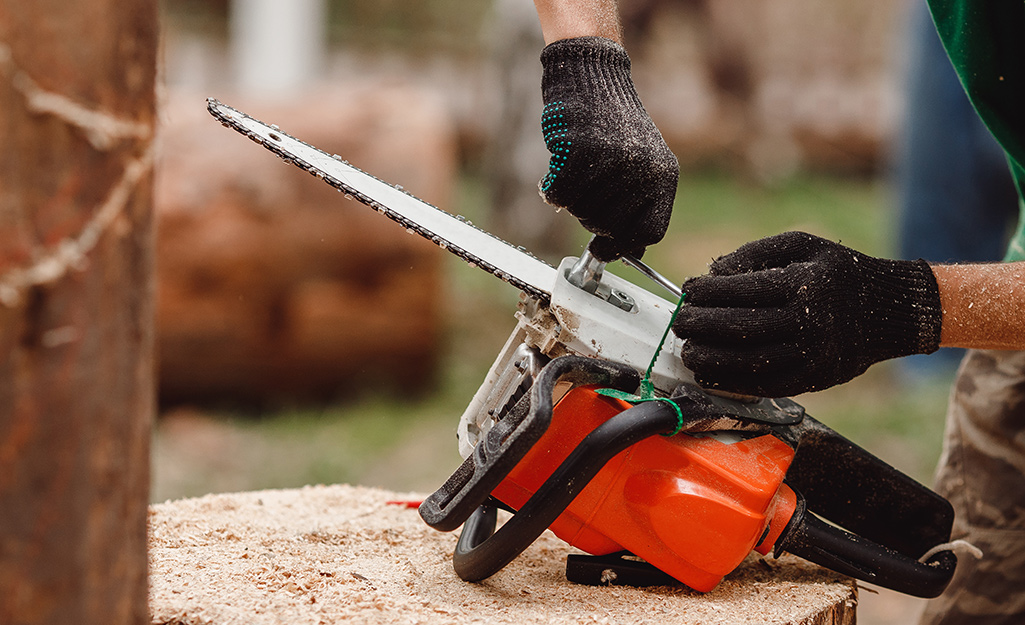When it comes to chainsaw performance, mastering the subtle art of fuel mixing can make all the difference. A well-tuned chainsaw is a powerful tool in the hands of a skilled operator, capable of cutting through wood with incredible speed and efficiency. Yet, many users overlook the importance of properly mixing oil and gasoline, resulting in suboptimal performance or even costly damage to their equipment.
The key to unlocking the full potential of your chainsaw lies in understanding the delicate balance between oil and gasoline. At the heart of this process is the two-stroke engine, which relies on a precise mixture of these two components for lubrication, cooling, and smooth operation. By fine-tuning the ratio of oil to gasoline, you can optimize your chainsaw’s performance, prolong its lifespan, and reduce harmful emissions.
That’s why this article delves into the science behind fuel mixing for two-stroke engines, debunks common misconceptions, and provides practical guidelines for achieving peak performance from your chainsaw. Read on to unlock the secrets of oil and gasoline mixing, and get ready to elevate your chainsaw skills to new heights.
Understanding Two-Stroke Engines: The Fundamentals
Two-stroke engines, commonly used in chainsaws, differ significantly from their four-stroke counterparts found in most cars. These compact engines complete an entire power cycle in just two piston strokes as opposed to four, making them lighter and more powerful per unit of weight. However, this design also requires a different approach to lubrication and fuel supply.
In a two-stroke engine, the intake and exhaust processes occur simultaneously as the piston moves up and down. This allows the fuel mixture to enter the combustion chamber while the exhaust gases are expelled. Consequently, conventional oil sumps cannot be used for lubrication, as the fuel would quickly become contaminated. Instead, oil is mixed directly with gasoline, providing lubrication as it combusts.
Decoding Oil Types: Mineral, Semi-Synthetic, and Full Synthetic
When it comes to selecting the appropriate oil for your chainsaw’s fuel mix, there are three main categories to consider: mineral, semi-synthetic, and full synthetic oils. Each type has its own set of properties that affect performance and longevity. For specific details, you can always refer to resources such as tabla de mezcla de aceite y gasolina motosierra or similar ones.
Mineral oils are derived from crude petroleum and offer basic lubrication at an affordable price point. However, they tend to produce more deposits and smoke compared to synthetic alternatives.
Semi-synthetic oils are a blend of mineral and synthetic components, offering a balance between performance and cost. These oils provide superior protection against wear and reduce deposit formation compared to mineral oils.
Full synthetic oils deliver the highest level of performance among the three options. They have excellent thermal stability, which reduces wear on engine components and extends the lifespan of your chainsaw. Additionally, they produce less smoke and harmful emissions.
The Role of Octane Ratings in Chainsaw Performance
Octane ratings measure a gasoline’s resistance to knocking during combustion, which can lead to reduced performance and engine damage. Chainsaws typically require a higher octane rating than standard automotive gasoline, as the two-stroke engine design is more susceptible to knocking.
Using fuel with an adequate octane rating ensures efficient combustion, reducing the risk of engine damage and improving overall performance. Consult your chainsaw’s owner manual for the recommended octane rating, and always choose gasoline that meets or exceeds this specification.
Determining the Ideal Oil-to-Gasoline Ratio for Your Chainsaw
The optimal oil-to-gasoline ratio for your chainsaw depends on the specific make and model, as well as the type of oil you are using. Common ratios range from 32:1 to 50:1, which means mixing 32 or 50 parts gasoline to one part oil. Refer to your owner’s manual for the manufacturer’s recommended ratio.
It’s essential to measure and mix the fuel accurately, as too much oil can cause excessive smoke and carbon deposits, while too little may result in insufficient lubrication and potential engine damage.

The Importance of Fuel Stabilizers for Longevity and Efficiency
Fuel stabilizers play a crucial role in preserving the quality of your chainsaw’s fuel mix during storage. Gasoline degrades over time, leading to gum formation that can clog carburetor jets and impair engine performance. By adding a fuel stabilizer to your mixed fuel, you can prolong its shelf life and prevent these issues.
Consult your owner’s manual for recommendations on suitable fuel stabilizers, and follow the manufacturer’s guidelines for proper usage.
Troubleshooting Common Issues with Fuel Mixing
Improper fuel mixing can cause various problems with your chainsaw’s performance, including difficult starting, erratic operation, or excessive smoke emissions. If you encounter any of these issues, double-check that you are using the correct oil-to-gasoline ratio and that your fuel mix is fresh and free of contaminants.
If problems persist, get in contact with a qualified service professional to diagnose and address any underlying issues with your chainsaw’s fuel system or engine components.
Best Practices for Mixing, Storing, and Disposing of Chainsaw Fuel
To maximize chainsaw performance and longevity, follow these best practices for fuel mixing, storage, and disposal:
- Always use a dedicated container for mixing fuel and clearly label it to avoid confusion.
- Mix only the amount of fuel needed for each job to ensure freshness.
- Store mixed fuel in an approved container, away from heat sources and out of direct sunlight.
- Dispose of old or contaminated fuel responsibly by contacting local waste disposal facilities or recycling centers.
By adhering to these guidelines, you can ensure optimal performance from your chainsaw while minimizing environmental impact.
In Conclusion
Mastering the science of oil and gasoline mixing in two-stroke engines, notably used in chainsaws, can greatly enhance the tool’s performance, lifespan, and environmental friendliness.
Understanding the engine operation, selecting the suitable oil type, respecting octane ratings, and determining the ideal oil-to-gasoline ratio is crucial. The use of fuel stabilizers for maintaining fuel quality during storage is essential. Also, proper troubleshooting of fuel mix issues and following best practices for fuel mixing, storage, and disposal can help prevent operational problems and environmental harm.
Embrace these fuel-mixing secrets to unlock your chainsaw’s full potential and maximize its performance.





